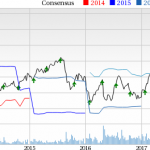Teeny-bopper fashion retailer Aeropostale made headlines last week when it filed for Chapter 11 bankruptcy, had its stock delisted from the NYSE, and announced a plan to close 154 out of 800 stores – all after a disastrous $136.9 million net loss in 2015.
Yesterday morning, Gap Stores reported lousy sales and plans to close stores to deal with what it called a “tepid macro environment for apparel retail” while admitting that changes it made to its product designs and selections have been slow to catch on. Gap stock plunged 10% after the announcement.
And last month, Sears’ slow-motion death march continued with an announcement that the company is closing 70 more Sears and K-Mart stores.
The retail industry is in crisis. Buffeted by structural changes such as the explosion of ecommerce, weak consumers and an increasingly selective consumer base, there’s been an epidemic of mall-based retailer bankruptcies lately (Sports Authority, RadioShack, Aeropostale, American Apparel, Pacific Sunwear…) and it’s only going to get worse. Thanks to heavy borrowings by their private equity owners (in some cases to pay dividends to reduce or eliminate their investments in these companies), most mall-based retailers that were taken private are likely to default on their bonds when they reach their maturity dates over the next couple of years…
When that happens, these six companies will be the first to go.
And you’ll be able to make a sizeable profit – if you do this.
The Slow Bleed In The Retail Industry Is About to Turn Fatal
The corporate credit cycle is at least two years from bottoming. Unlike previous default cycles, which occurred in a normal interest rate environment, this default cycle is delayed by low interest rates that let borrowers (particularly those owned by private equity firms that have a huge incentive to delay default as long as possible to prolong their management fees) delay restructurings and bankruptcies longer than in earlier cycles. The fact that so many energy companies filed for bankruptcy so quickly shows the severity of the energy price collapse, but other industries like retail are bleeding more slowly.












Leave A Comment